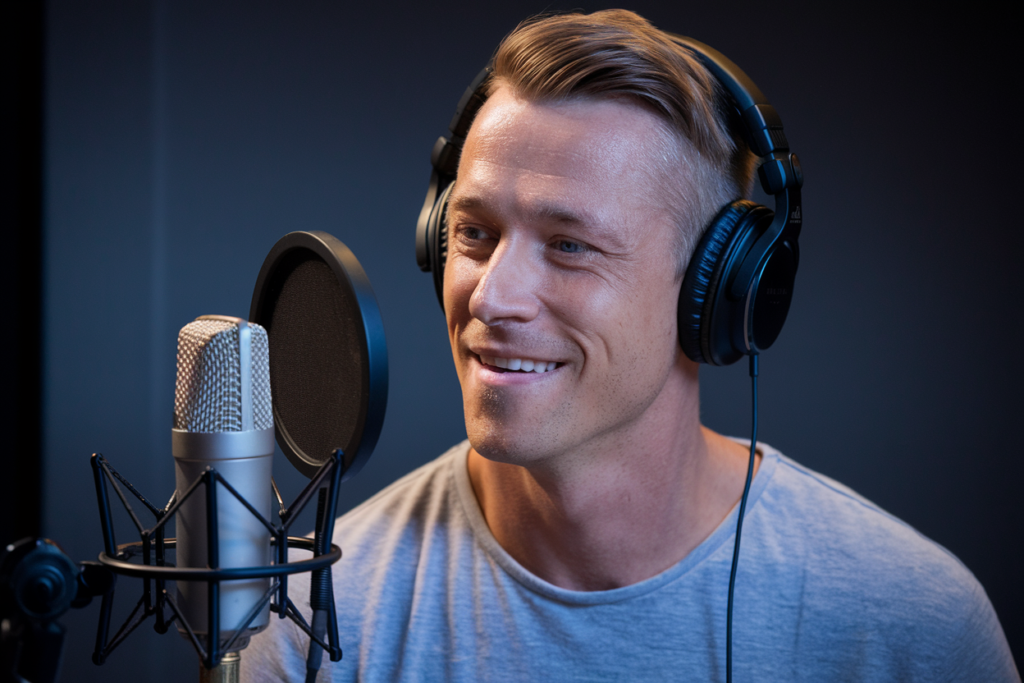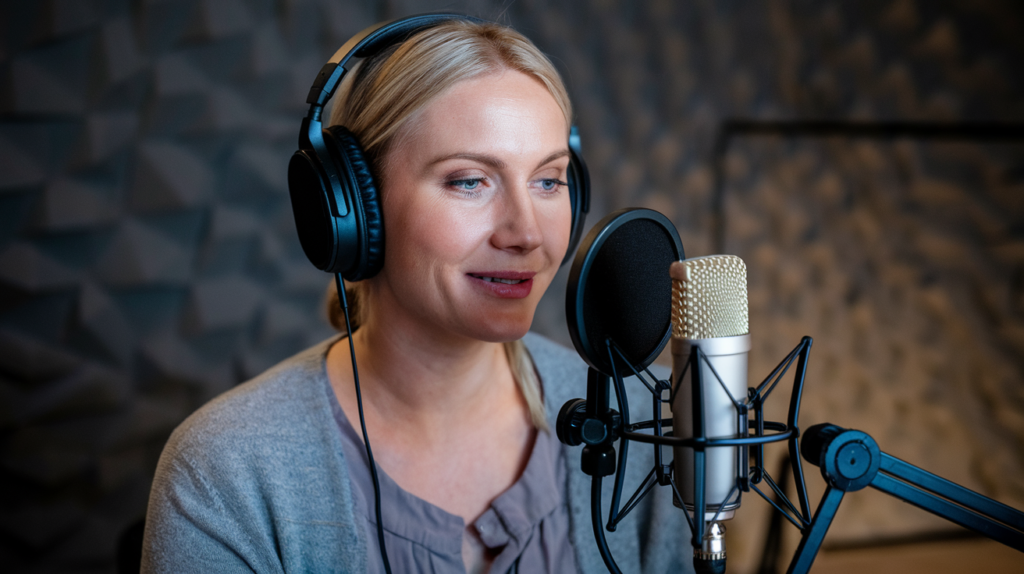Key Takeaways
- Diverse Accents: Australia has a rich variety of accents, including General, Broad, and Cultivated Australian, each reflecting unique regional characteristics and cultural influences.
- Accent Importance: Accents are not just about pronunciation; they convey identity and connection to place, playing a crucial role in voice acting and audience perception.
- Historical Evolution: The evolution of Australian accents is rooted in historical migration patterns and British colonization, leading to distinct regional variations that carry cultural significance.
- Sociolinguistic Influences: Factors such as geography, social class, and media exposure shape the diversity of Australian accents, making awareness of these elements essential for effective communication.
- Comparative Analysis: Understanding how Australian accents compare with British and American accents enhances voice actors’ authenticity and adaptability in their performances.
- Cultural Significance: Each accent serves as an emblem of cultural heritage, influencing both personal expression and professional delivery in fields like voiceover work.
Ever wondered if there’s a standard Australian accent? You’re not alone. With Australia’s rich tapestry of cultures and languages, the idea of a single accent can feel elusive. From the laid-back tones of Sydney to the distinctive drawl of Melbourne, it seems like every region has its own flavor.
The Concept of Accent
Accent defines how you pronounce words, influenced by your geographical location and cultural background. In Australia, accent showcases a rich tapestry of regional variations. You might hear the relaxed tones of Sydney or notice the distinct drawl from Melbourne. Each area has its unique characteristics, making it difficult to pinpoint a single “standard” Australian accent.
Accents also extend beyond mere pronunciation; they convey identity and connection to place. Voice actors or voice talent often adapt their accents for specific roles, tapping into these nuances to create authentic characters. This flexibility highlights the diverse nature of accents across Australia.
In professional contexts like voiceover work, understanding these subtleties is crucial. Your choice of accent can significantly impact how an audience perceives your message. Whether you’re looking for a friendly tone or something more formal, recognizing the value in Australia’s varying accents helps tailor your approach effectively.
Ultimately, while there may not be one standard Australian accent, each variation enriches communication and storytelling in unique ways, particularly in fields like voice acting where authenticity resonates deeply with listeners.
Characteristics of Australian Accents
Australian accents showcase a rich tapestry of sounds that reflect the diverse cultures and regions across the country. Understanding these characteristics can enhance your appreciation for voiceovers and the unique identity they convey.
Regional Variations
Australia boasts several distinct regional accents that cater to various cultural backgrounds.
- General Australian: This is often perceived as the most neutral accent, commonly heard in media and among urban populations.
- Broad Australian: Characterized by its exaggerated vowel sounds, this accent often aligns with rural or working-class speakers.
- Cultivated Australian: This accent exhibits more British influences, typically associated with higher social status and education.
Each region adds its own flavor to communication, making it essential for voice actors to adapt their delivery according to audience expectations.
Key Features
Several key features define the nuances of Australian accents:
- Vowel Sounds: Australians frequently use diphthongs, where single vowels glide into two vowel sounds. For example, “mate” may sound more like “mite.”
- Intonation Patterns: The intonation tends to rise at the end of statements, giving them a questioning tone that invites engagement.
- Dropping Consonants: In casual speech, consonants like ‘t’ in words such as “butter” can become softer or even silent.
These elements contribute significantly to how listeners perceive authenticity in voiceovers. Recognizing these nuances allows you to choose a voice talent whose style matches your project’s needs effectively.
The Debate on Standardization
The concept of a standard Australian accent sparks lively discussions among linguists and voice artists alike. Accents reflect the rich tapestry of Australia’s diverse cultures, making it challenging to pinpoint a single “standard” accent.
Historical Perspectives
Historically, accents evolved from waves of migration and British colonization. Early settlers brought various English dialects, which blended with Indigenous languages and later immigrant influences. This historical mix created distinct regional variations that transcend mere pronunciation; they carry cultural significance too. For instance, the more formal Cultivated Australian accent emerged as an emblem of higher social status while Broad Australian often reflects rural roots. Understanding these historical contexts helps voice actors grasp why accents vary so widely across regions.
Current Trends
Currently, the landscape of Australian accents continues to evolve alongside global influences. Social media and digital platforms expose Australians to varied speech patterns, leading some to adopt elements from different accents for broader appeal in sectors like advertising or entertainment. Voice over talent can tap into this trend by mastering various styles—from General Australian’s neutral tones to the vibrant character of Broad Australian—allowing them to connect authentically with diverse audiences. As you consider engaging voiceover professionals, recognizing these nuances can enhance your project’s authenticity and impact significantly.
Sociolinguistic Factors
Understanding the sociolinguistic factors influencing Australian accents enhances comprehension of their diversity. Accents reflect cultural identity, shaped by various elements like geography, social class, and historical context.
Influence of Culture
Culture plays a pivotal role in shaping accents across Australia. Each region boasts unique linguistic traits influenced by the local population’s history and heritage. For instance, urban areas often showcase a mix of accents due to diverse immigrant communities contributing to the soundscape. You’ll find that these variations can signal not just geographical origins but also social ties and group affiliations. Recognizing these cultural nuances is essential for voice actors aiming to connect authentically with their audience. By understanding how culture impacts speech patterns, you can tailor your delivery for resonance in specific markets.
Media’s Role
Media significantly influences accent perception and evolution in Australia. Television shows, films, and online content expose audiences to various accents, often leading to shifts in language use over time. Popular programs featuring distinct Australian characters reinforce certain speech patterns while diminishing others. As a result, you’ll notice some individuals adopting features from different regional accents or even international styles when they engage with media consistently. Voice talent must stay attuned to these trends; adapting vocal delivery based on prevailing media influences helps maintain relevance and appeal in an ever-changing landscape.
Incorporating awareness of sociolinguistic factors into voiceover work enriches performance authenticity while enhancing communication effectiveness with targeted audiences.
Comparison with Other Accents
Australian accents stand out in comparison to other global accents due to their unique characteristics and rich diversity. While you may recognize the distinct sounds of General, Broad, and Cultivated Australian accents, it’s helpful to see how they measure up against accents from other regions.
Comparison with British Accents
- Pronunciation Differences: Australian English often drops certain consonants more than British accents do. For example, the ‘r’ sound at the end of words tends to be softer or dropped entirely in casual speech.
- Vowel Sounds: Vowels in Australian English are generally broader and more nasal compared to British counterparts. This can make words sound quite different, even if they look similar on paper.
Comparison with American Accents
- Intonation Patterns: American English typically features a more pronounced intonation curve. In contrast, many Australians use a flatter intonation that can lend a relaxed feel to conversations.
- Influence of Regional Dialects: Just as Australia showcases regional variations, so does America. The Southern drawl contrasts sharply with Midwestern flatness, much like how Broad and General Australian differ.
Impact on Voiceover Work
Understanding these accent comparisons is crucial for voice actors aiming for authenticity in their performances. When you grasp the nuances between accents—whether it’s an Australian versus a British or American accent—you enhance your ability to connect with audiences effectively.
For instance, if you’re working on a project targeting an international market, knowing how your accent aligns or diverges from others can significantly influence audience perception and engagement.
Mastering various styles not only broadens your skill set but also boosts versatility as a voice artist. This adaptability allows you to meet client expectations more effectively while ensuring that your delivery resonates deeply across diverse cultural backgrounds.
In essence, awareness of these differences equips you as a voice talent with the tools necessary for impactful storytelling—whether it’s through commercials, audiobooks, or animated characters. Your understanding of regional distinctions can elevate your work and create lasting impressions on listeners worldwide.
Conclusion
Understanding the nuances of Australian accents is essential for anyone looking to engage meaningfully with diverse audiences. The rich tapestry of regional variations reflects a deep cultural heritage and ongoing evolution influenced by global trends. Embracing these differences not only enhances your communication skills but also enriches storytelling across various platforms.
For voice actors in particular, mastering the subtleties of these accents can significantly impact audience perception. As you navigate this vibrant landscape, remember that authenticity is key. By recognizing and adapting to the intricate characteristics of Australian accents, you’ll connect more effectively with listeners and elevate your craft.
Frequently Asked Questions
What is a standard Australian accent?
The term “standard Australian accent” refers to the General Australian accent, which is considered neutral and commonly used in media. However, Australia has many regional accents that vary significantly due to cultural diversity and geographical factors.
How many types of Australian accents are there?
There are three main types of Australian accents: General Australian, Broad Australian, and Cultivated Australian. Each type has distinct characteristics influenced by social class and historical context.
Why is understanding accents important for voice actors?
Understanding accents helps voice actors connect authentically with their audience. It allows them to adapt their delivery based on regional nuances, enhancing the effectiveness of communication in projects like advertising or storytelling.
What influences the evolution of Australian accents?
Australian accents evolve due to various factors such as migration waves, British colonization, Indigenous languages, and modern influences from social media and digital platforms that promote diverse speech patterns.
How do sociolinguistic factors impact Aussie accents?
Sociolinguistic factors like geography, social class, and cultural identity shape how Australians speak. Different regions may showcase mixed accents due to immigrant communities influencing local speech patterns.
How do Australian accents compare with British and American ones?
Australian accents differ from British and American ones in pronunciation, vowel sounds, and intonation patterns. Understanding these differences is crucial for voice actors aiming for authenticity across international markets.
Can mastering different styles enhance a voice actor’s versatility?
Yes! Mastering various styles broadens a voice actor’s skill set. This versatility allows them to meet client expectations better and create memorable impressions on diverse audiences worldwide.







